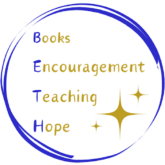This was first posted on elizabethannewrites on June 5, 2011.
The ages of 5 to 8 years mark a time of great transition in a child’s life. Starting kindergarten and then “real” school, moving beyond the familiar (and even for a child who has been in daycare, school is going to be a different experience), learning so many new things — it’s an exciting, intense, and sometimes scary time for kids.
It is definitely NOT a time to ease up on reading aloud with kids, thinking for instance that they are bombarded with words, words, words all day. The familiar ritual of reading with the parent, caregiver, or other person can give a much-needed sense of stability in the midst of all the change, as well as reinforcing the joy of reading. For some children, the mechanics of learning to read may be a chore, and it’s crucial to continue to underline the fun and the enjoyment that reading can bring.
Also important is remembering that in the process of learning to read, children progress at their own speed and at their own time. Some children are ready to be taught to read when they are 3, others seem to just learn to read on their own, others may be ready at the traditional age of 6, still others may not be ready until 8 or so. Modelling the joy and practice of reading by reading aloud with the children as well as showing them that you enjoy reading, will help them as they reach toward that skill when they are ready.
Keeping expectations realistic might also be necessary — one of the stories in our family lore is of my cousin (two months older than I) who came downstairs one morning with the family copy of Anna Sewell’s Black Beauty in his hands, placed it carefully on the corner of the kitchen table, and cautioned, “Don’t anybody move that. We’re learning to read today!” Obviously he was expecting to be able to read Black Beauty when he got home. Family lore does not record what must have been great disappointment on his part that evening.
There are many ways to encourage reading, writing, literacy in general, in the years preceding school and in the all-important early school years. Another family I know wrote notes to their boys from their early years, and encouraged the boys to write notes to them as well, even before they knew how to string together letters to form words. Notes might have to be interpreted, but they were treated with respect and the messages were taken seriously — such as one found in the refrigerator crisper, written in a small boy’s pre-literate manner, but interpreted as “Remember, I don’t like broccoli!” (That may or may not be the vegetable he was objecting to, but you get the idea.) One of my writing colleagues took her daughter to as many book signings and readings as possible — this is a wonderful idea if one is in a city where children’s book authors regularly do book events. It not only amasses a good library for the child, but shows how books come about, that there is a real person who imagines the story and puts it down on paper for the rest of us to enjoy.
Now that the child is getting older, with a more advanced vocabulary and understanding of the world, it’s time to begin reading chapter books — although picture books should not be abandoned just yet. There is room for picture books, early readers that the child can begin to decipher on his or her own (and then can learn the joy of reading aloud to a parent or sibling!), small chapter books, and indeed longer chapter books that can be enjoyed by the whole family (remembering my six-year-old cousin’s eagerness to read Black Beauty).
Other resources to give guidance in reading to kids aged 5 to 8 may be found at a website called Little Ones Reading Resource, which is a comprehensive guide to reading with children, and in the book I’ve mentioned many times before (but cannot recommend enough!), Emma Walton Hamilton’s Raising Bookworms (see the link in the sidebar). Emma’s chapter entitled Elementary School: Nurturing the Budding Reader is packed with suggestions for making reading a delight, for tying it in with other activities, for making reading truly a part of one’s life that one can’t do without. Two of her suggestions particularly resonate with me. One — “Allow — make that encourage — reading in bed.” For someone like me, who has always felt my middle name should be “just one more chapter”, those words are music to my ears. I was also delighted to read “Involve your child in performing and visual arts programs” and the attendant explanation that “Students who actively participate in the arts are twice as likely to read for pleasure…” (p. 61, Raising Bookworms). I’d encourage you to check out these resources for yourself — particularly Emma’s book. I think that book deserves a place in every household, whether or not there are children in that household.
In my next post, I’ll share some books that are great for kids in this age group. Until then, happy reading!

Thanks for this wonderful resources, Beth. I know I am late telling you that I received “Raising Bookworms.” It’s on my bedside table, and I look forward to digging into it and reviewing it. Thanks again!
Thanks, Kirsten! I’m glad the book arrived — hope you find it a good one!